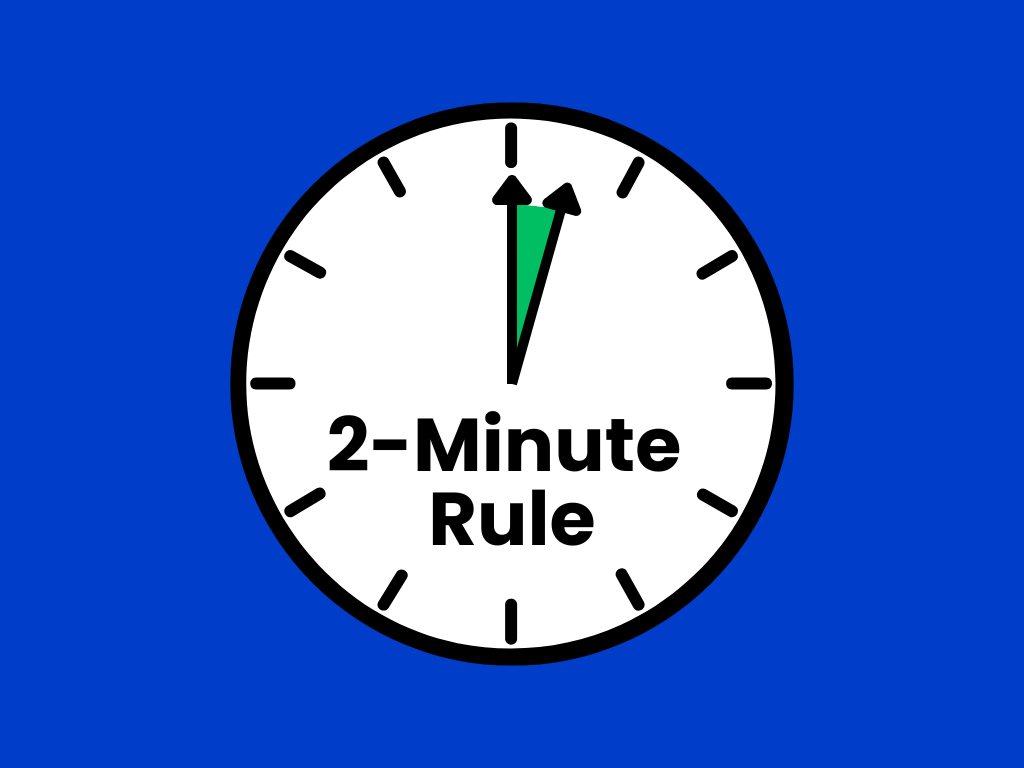Procrastination can sneak up on you. You might want to get things done, but somehow, you find yourself doing everything except the task at hand. If this sounds familiar, the 2-Minute Rule might be just the solution you need.
Contents
What Is the 2-Minute Rule?
The 2-Minute Rule is simple: If a task takes two minutes or less, do it now. You don’t need to overthink it or delay it. This rule helps you clear small tasks before they pile up and become overwhelming. It was created by productivity expert David Allen as part of his Getting Things Done (GTD) framework.
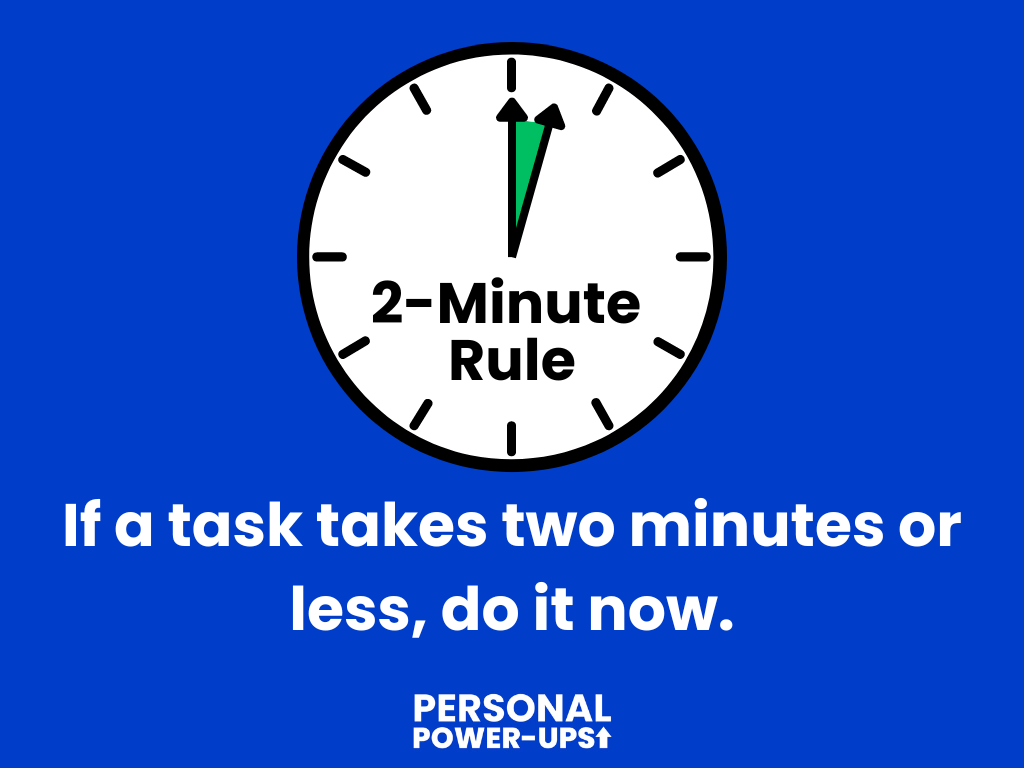
▼ Ad
Why the 2-Minute Rule Stops Procrastination
The 2-Minute Rule breaks down the barrier between thinking about the task and actually doing it. Procrastination thrives when tasks seem too big or daunting. By shrinking them into two-minute actions, you remove the mental block that keeps you from starting.
It’s easier to convince yourself to take two minutes to do something, and before you know it, you’ve finished several tasks. The result? Less stress, fewer things piling up, and more productivity.
The 2-Minute Rule offers several benefits, making it an effective tool for beating procrastination:
Quick Wins Boost Motivation. Completing small tasks gives you a sense of accomplishment. These small wins create positive momentum and encourage you to tackle more tasks.
Reduces Overwhelm. Big tasks can feel daunting, but breaking things down into two-minute chunks makes your workload more manageable. You’ll feel less stressed and more in control of your time.
Increases Productivity. By consistently taking action, even on small tasks, you clear up mental space and reduce your to-do list. This allows you to focus on more important tasks with fewer distractions.
Creates a Clean Slate. Handling two-minute tasks immediately prevents them from piling up. A clean desk, empty inbox, or completed checklist helps you feel organized and ready to tackle bigger projects.

▼ Ad
How to Apply the 2-Minute Rule Right Now
1. Identify Small Tasks
Look at your to-do list. Which tasks can you complete in two minutes or less? It might be replying to an email, filing a document, or organizing your desk. These are the ones you should focus on first.
2. Take Action Right Away
Once you’ve found these quick tasks, don’t wait. The key to making the 2-Minute Rule work is immediate action. You’ll find that starting a task often motivates you to keep going.
3. Create Momentum
When you knock out these small tasks, you create momentum. That energy can help you tackle bigger projects with less resistance. It’s like a snowball effect: the more you do, the more you’ll want to keep going. Action inspires action!
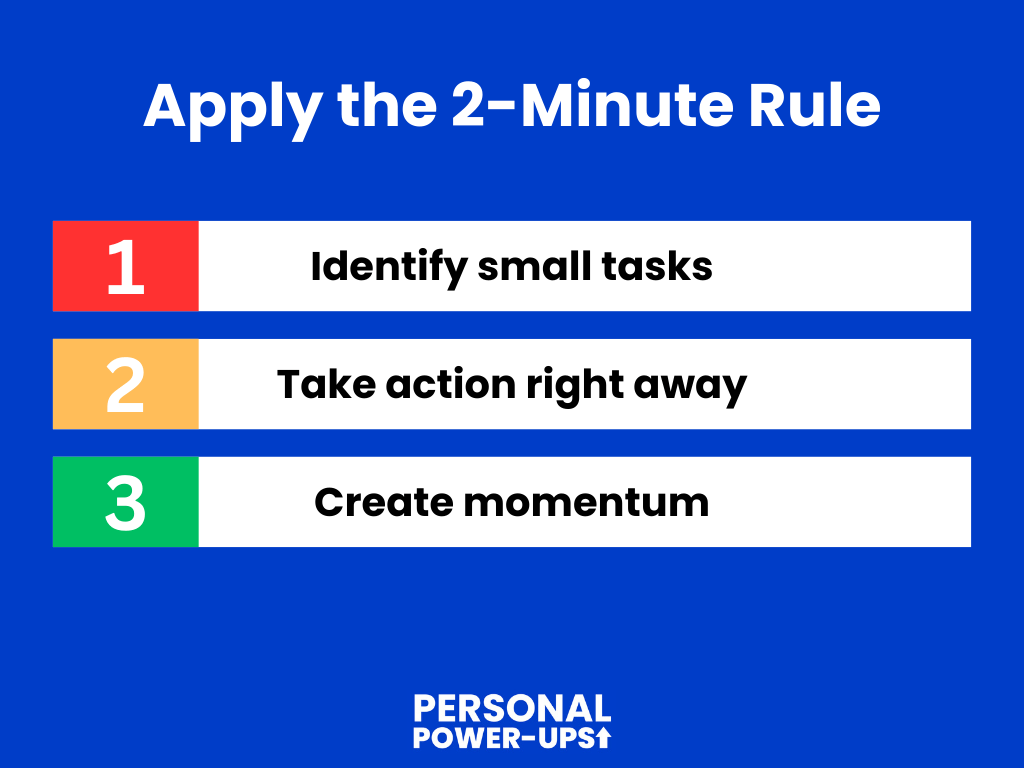
How to Build Habits with the 2-Minute Rule
The 2-Minute Rule isn’t just for getting tasks done; it’s also a powerful way to build new habits. Here’s how you can use it to your advantage:
Start Small
If you want to build a new habit, start by committing to just two minutes of it. For example, if you want to start exercising, begin with two minutes of stretching. The point is to make it so easy that you can’t say no.
Be Consistent
Once you’ve started a habit with the 2-Minute Rule, focus on repeating it daily. Even if it’s just two minutes, consistency will help it stick. Over time, you’ll naturally increase the amount of time you spend on the habit. If you struggle with being consistent, be sure to use the 2-Day Rule as well.
Stack Habits
Combine the 2-Minute Rule with habit stacking. Attach a new habit to an existing one. For instance, if you want to develop a reading habit, read for two minutes right after you brush your teeth each night.
Celebrate Progress
Celebrate even small wins. The habit of celebrating your effort builds motivation to keep going. As the habit grows, those two minutes can easily turn into ten or more.
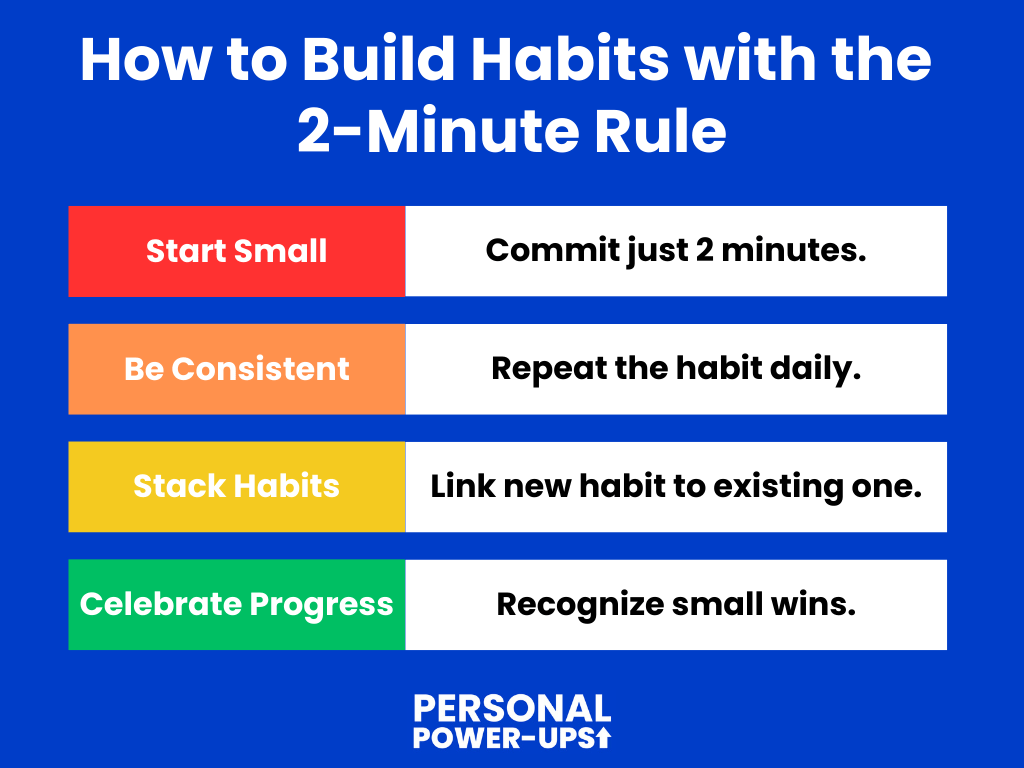
▼ Ad
Examples of Using the 2-Minute Rule
To help you get started, here are several examples on how to stop procrastinating using the 2-minute rule.
Tackling a Messy Desk
Your desk is a mess, and you keep avoiding cleaning it because it feels overwhelming. However, you now set a timer for two minutes and start by clearing one small section—like removing cups or organizing papers into a stack. Luckily, you find the momentum to continue cleaning beyond two minutes. But, even if you had stopped, a part of your desk is now tidier, making the task feel less daunting next time.
Writing an Important Email
You’ve been putting off replying to an email that requires a thoughtful response. But, with the 2-minute rule, you open the email and draft a quick outline. Once you’ve started writing, the email feels less intimidating, and you’re more likely to finish and send it. If not, you’ve at least broken the ice, reducing mental resistance to finish it later on.
Exercising Regularly
You keep delaying exercise because a full workout feels like too much effort. With the 2-minute rule, you put on your workout clothes and do a quick activity, like stretching or two minutes of push-ups. Getting started is often the hardest part, especially with exercise. Once you’ve begun, you’ll likely extend your workout into a longer session. If not, you’ve still moved closer to building a healthy habit.

Additional Tips
- Not Ideal for Large Tasks. This rule works well for small tasks, but it’s not designed for large, complex projects. If you only focus on what can be done quickly, bigger tasks might get neglected.
- Can Lead to Task-Hopping. If you’re constantly jumping between two-minute tasks, you may never settle into deep work. The key is to balance small tasks with focused time for more significant projects.
Apply it to routine tasks. Use the rule for daily chores, like washing a dish or making your bed. These quick wins set the tone for a more productive day.
Combine it with time blocking. Block out time for specific tasks, and when the time comes, use the 2-Minute Rule to kick off the session. This helps you break into work more easily. Also be sure to block time for large, complex tasks that might otherwise get neglected.
Avoid perfectionism. Don’t let the idea of doing something perfectly slow you down. The 2-Minute Rule is about getting things done, not doing them flawlessly. Focus on progress, not perfection.
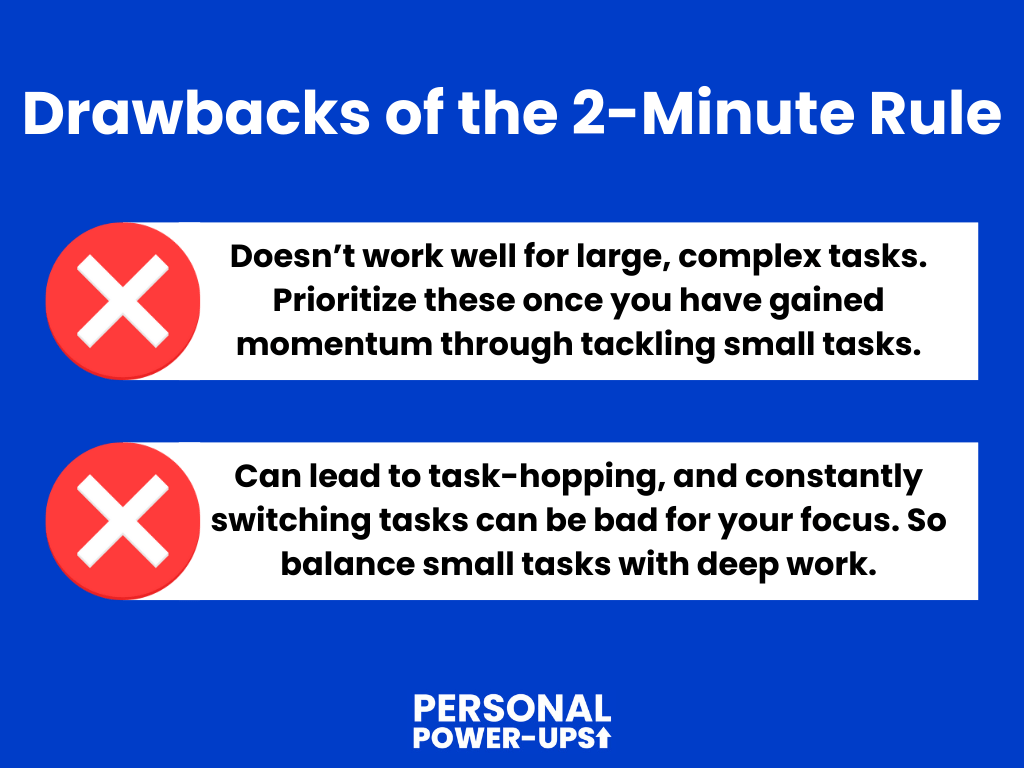
▼ Ad
Take the First Step
Procrastination can feel like a mountain, but with the 2-Minute Rule, you can chip away at it one small task at a time. Start today by identifying a few quick wins. Take two minutes to cross something off your list, and feel the momentum build from there. You’ll soon realize that starting is half the battle. If you feel like 2 minutes is too short, check out the 5-Minute Rule next.

